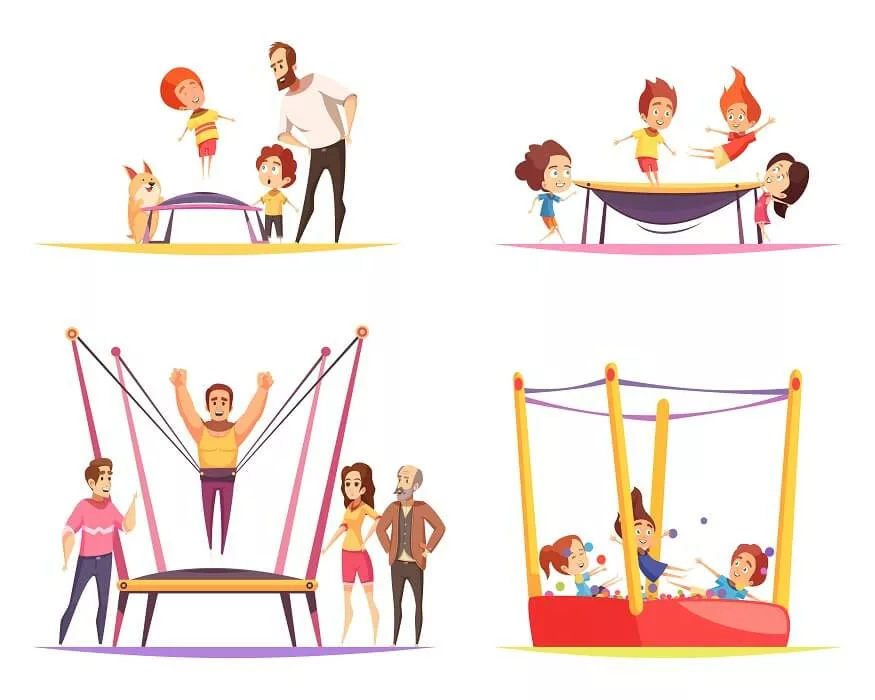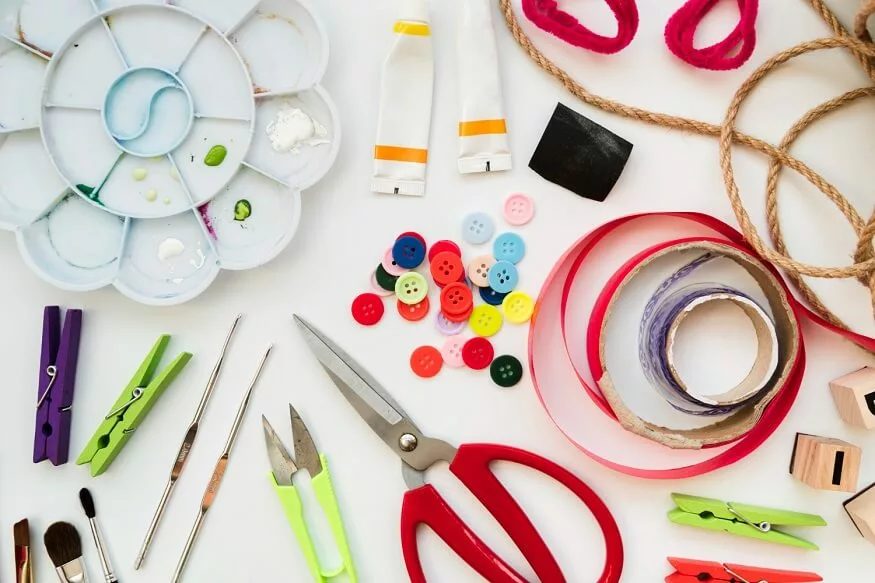A trampoline is a recreational and sports equipment, often used for kinetic or acrobatic purposes. Made up of a strong fabric sheet, which is connected to a steel frame with coiled springs, this apparatus enables individuals to bounce off of its surface with potential heights and velocity.
The fabric sheet, also called the bounce mat, is not inherently elastic but achieves elasticity from the potential energy stored in the springs which connect it to the frame.
Originally, trampolines were invented and used for training pilots and astronauts to help develop and improve their orientation skills. Later, it was incorporated as a part of sports as well.
Today the gleeful screams accompanying a good bounce on a trampoline are sounds that are common in many public spaces such as indoor and outdoor playgrounds, amusement parks, and even parks. For many, jumping off a trampoline is a combination of pure joy and unbridled freedom.
However, due to the potential velocity and heights achieved, safety concerns are associated with trampolines. It is not recommended for children below six years of age. The American Academy of Paediatrics encourages that trampolines should not be used at homes or playgrounds, and they also recommend padded frames and supervision during usage.
This blog aims to provide a foundational understanding of safety tips, precautionary measures and some bouncing tricks you can enjoy while on a trampoline.
Trampoline safety precautions
Thousands of trampoline-related injuries are reported annually; hence, safety should always be the top priority when using trampolines. Below are some specific measures which should be exercised consistently.
1) Assembly
Ensure that the trampoline is assembled correctly and inspected thoroughly before any use. Provide adequate padding on the edge which covers springs, hooks, and the steel frame to reduce the risk of injury from falls onto these hard surfaces. The trampoline must be placed in a flat, spacious area clear of potential hazards like trees, fences, or other outdoor equipment.
2) Create rules
Establish and enforce rules: no pushing, no roughhousing, and always wait for your turn. Creating rules can significantly improve safety. It is advisable to allow just one person on the trampoline at any time to avoid collision injuries. Discourage flips or somersaults as they can lead to serious head and neck injuries. Also, children under the age of 6 should not use a full-sized trampoline due to their underdeveloped motor skills and lower body strength.
3) Regular maintenance
Regular equipment checks and maintenance are a key aspect of trampoline safety. Look out for signs of wear and tear, including stretched springs, frayed fabric, or deteriorated padding, and replace the faulty components immediately.
4) Ensure adult supervision
Despite the fact they might resist, older children and teenagers still require close monitoring to ensure they follow safety rules and don’t take unnecessary risks. Similarly, young children should always be under adult supervision when using a trampoline.
5) Safety nets
A surrounding safety net can prevent falls from the trampoline, but it is not a substitute for good practice and supervision. Some research even suggests that safety nets may lead to a false sense of security, encouraging users to take unfounded risks.
Also Read: Childhood Field Trips: Aims and objectives of field trip
Trampoline safety tips
- Before every use, conduct a thorough inspection of the trampoline. Ensure there are no holes, damages, or rust.
- Use safety pads that cover the springs, hooks, and frame of the trampoline, mitigating the risk of injuries.
- The safest way to use a trampoline is one person at a time as collision injuries can happen when multiple people bounce simultaneously.
- Discourage risky moves like somersaults or flips which could lead to severe neck, head, and spine injuries.
- Encourage landing on both feet to minimise the risk of injury.
- Make sure the area around the trampoline is clear of hazards.
- Place the trampoline on a level surface, ideally on a soft, energy-absorbing ground.
- Always aim to stay in the centre of the mat, with your weight evenly distributed. Control jumping to avoid bouncing off.
- Do not jump off, but rather exit the trampoline slowly and safely.
- Remove the ladder after use to prevent unsupervised access.
- Keep the trampoline away from trees, fences or other structures to avoid injuries.
- Having a prepared emergency plan can help deal with any injuries.
- Ensure there is ample clearance around and above the trampoline.
- Keep the trampoline dry and clean to prevent slipping incidents.
- Teach safety rules, ensuring children understand the risks associated with trampolining.
- Avoid jumping too high too soon; instead, work your way up gradually.
Also Read: What are Indoor Gross Motor Activities for Preschoolers
Bouncing tricks
Trampolines offer an entertaining way to exercise, providing both adults and children with an engaging full-body workout. Below are a host of tricks you can perform on a trampoline.
- Tuck Jump: This is a simple trick where you bounce up and bring your knees to your chest, while hugging them with your arms. It is an excellent way to work on body control and balance.
- Straddle Jump: Similar to the tuck jump, in a straddle jump, you spread your legs wide mid-air as if doing a seated leg split.
- Pike Jump: For the pike jump, you would extend your legs out in front of you, mid-air, and try to reach out to touch your toes.
- Seat Drop: This trick involves landing on the trampoline in a seated position with legs extended, then bouncing back onto your feet.
These simple, beginner-friendly tricks not only enhance trampoline fun but also improve body balance and coordination. However, tricks should always be performed with extreme care and only attempted under professional supervision.
Without proper training, attempting complicated manoeuvres could lead to severe injuries. Always be cautious and remember that safety comes first.
A trampoline provides a platform for long-term fun, but only if used responsibly. Be aware of the best safety practices and educate children about them. Take slow, cautious steps when progressing with trampoline tricks, never rush into attempting complicated tricks, and always keep safety at the forefront.
For more such interesting blogs, Visit EuroSchool.










